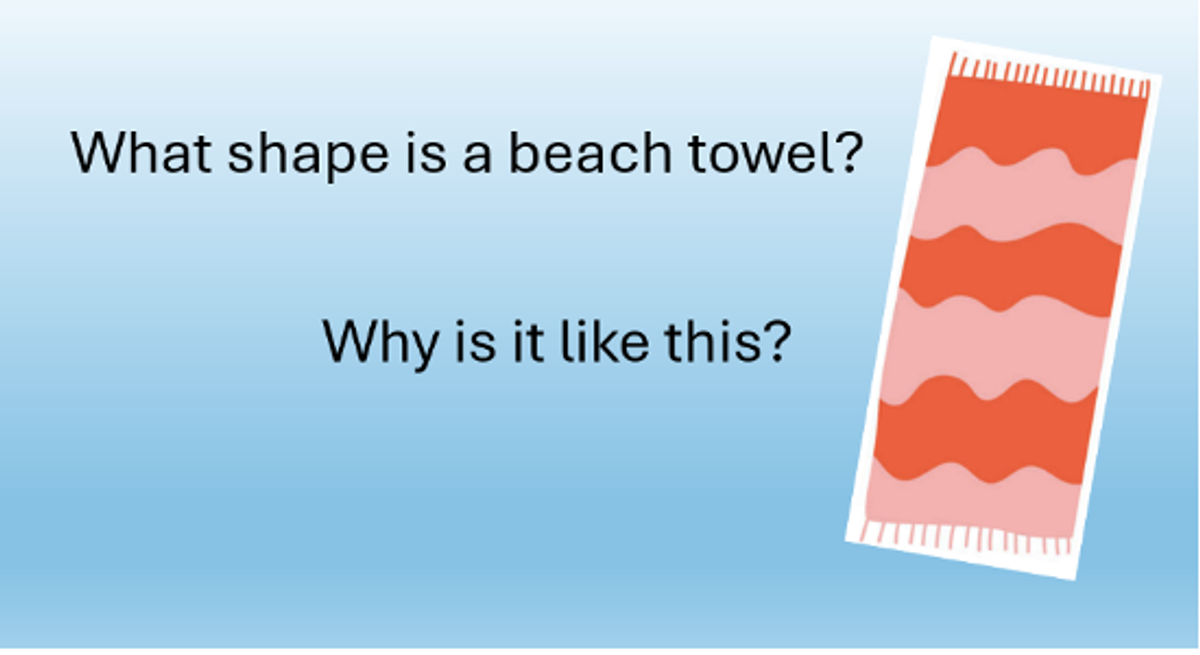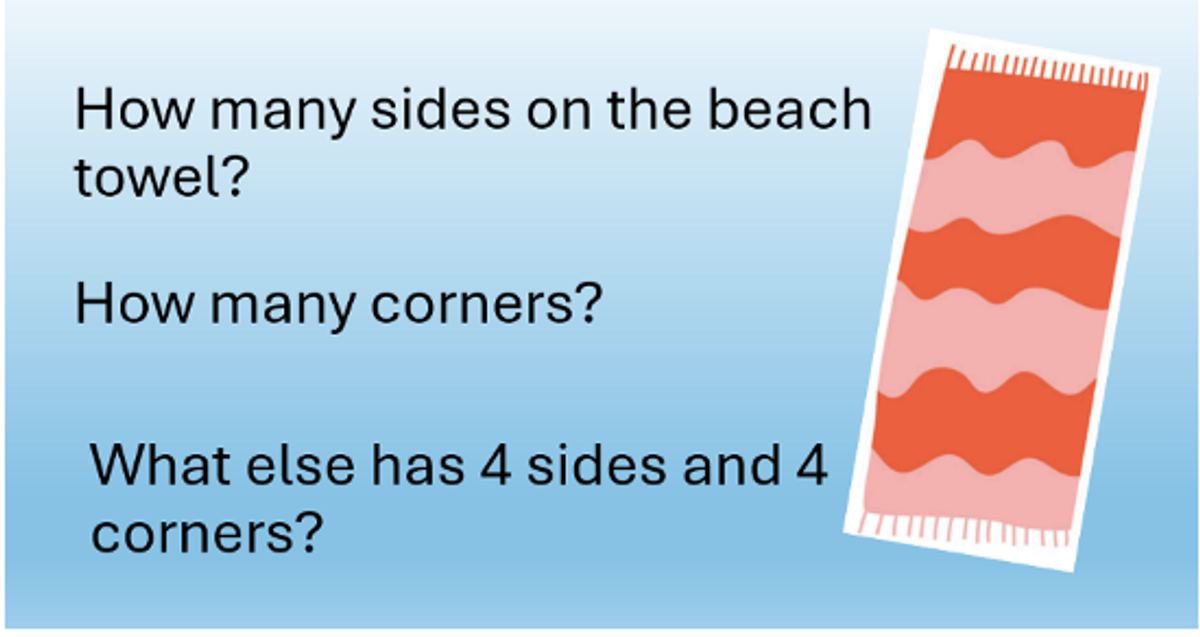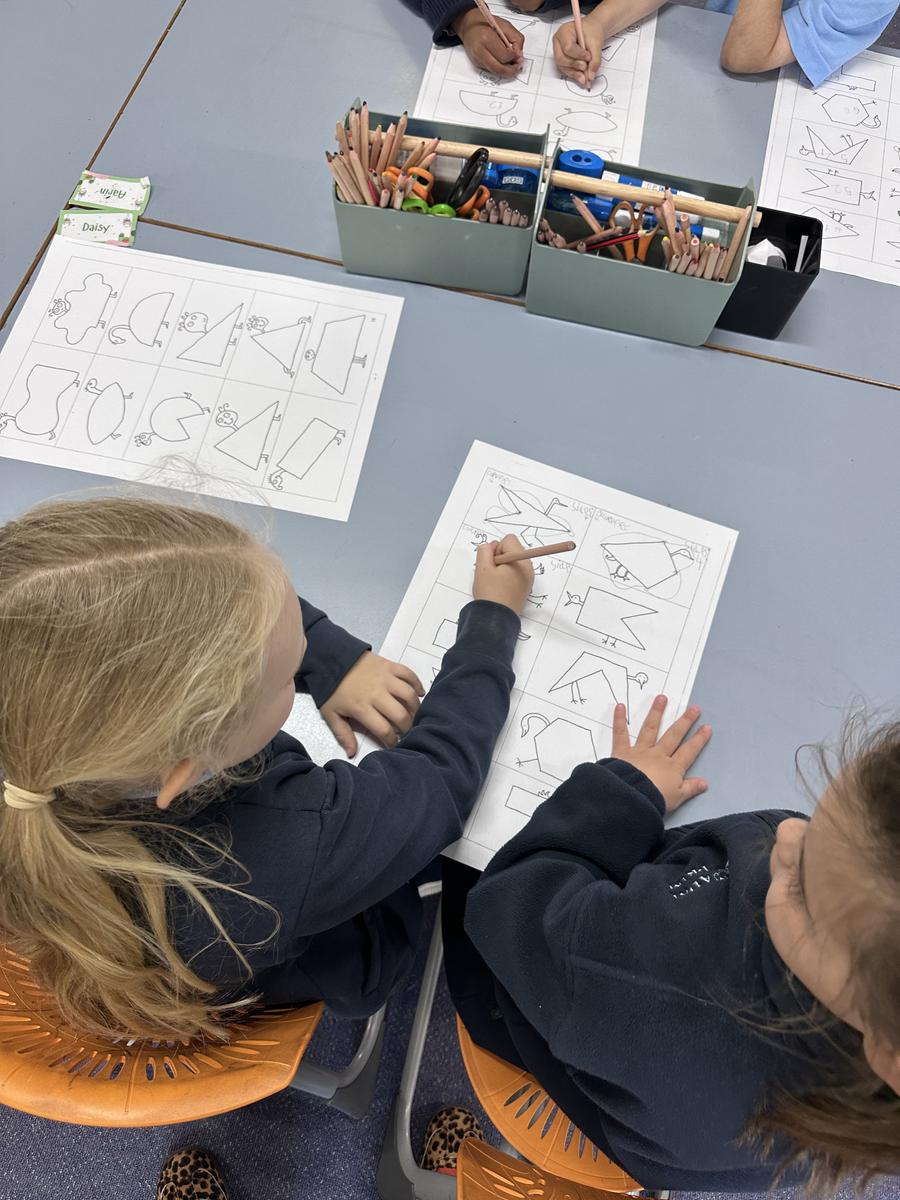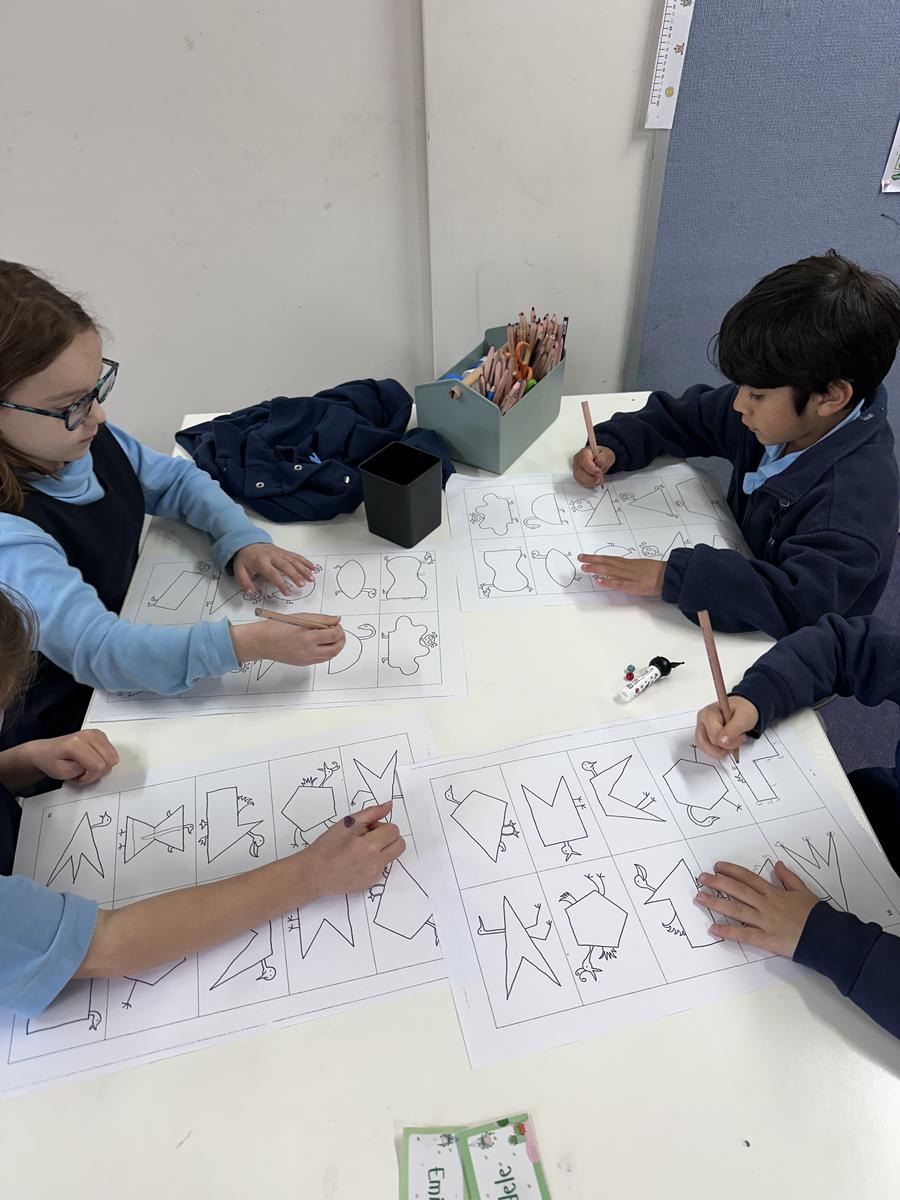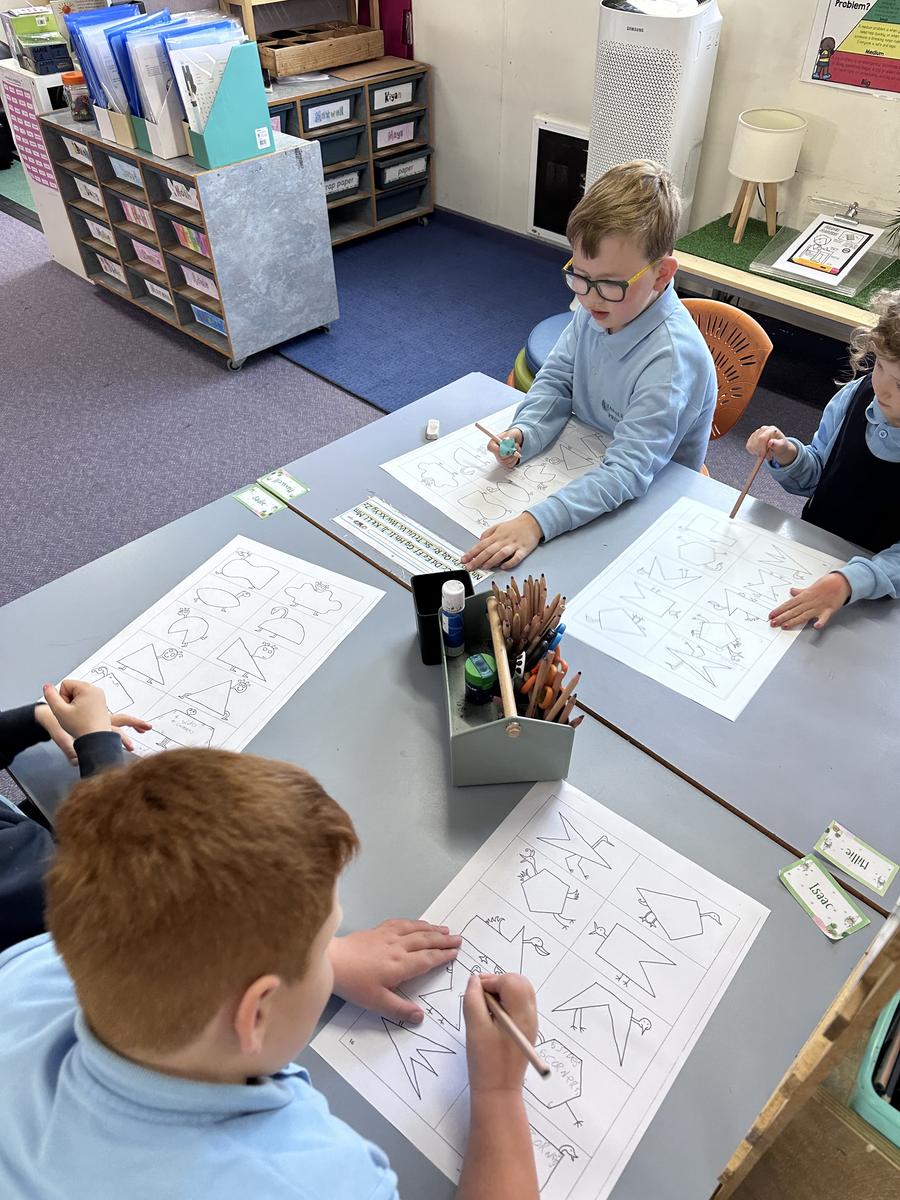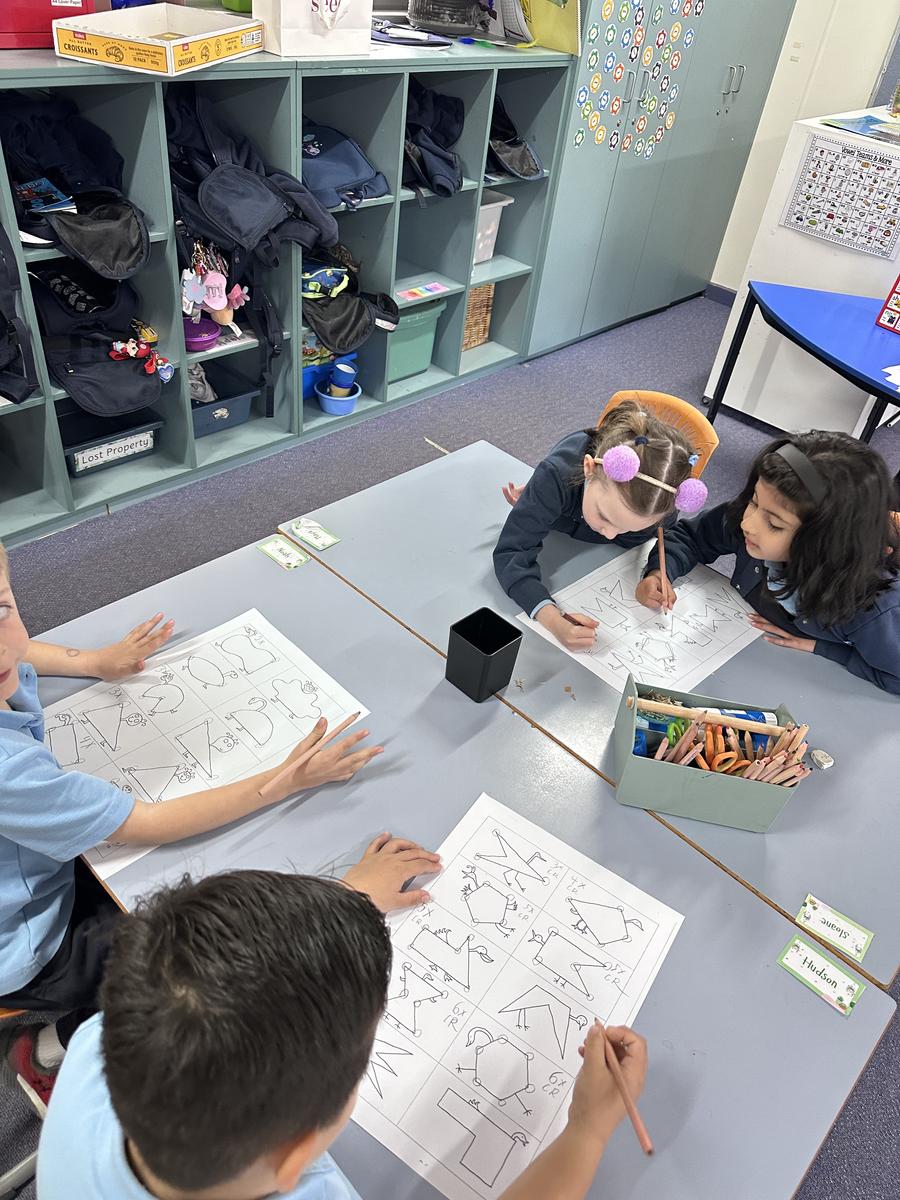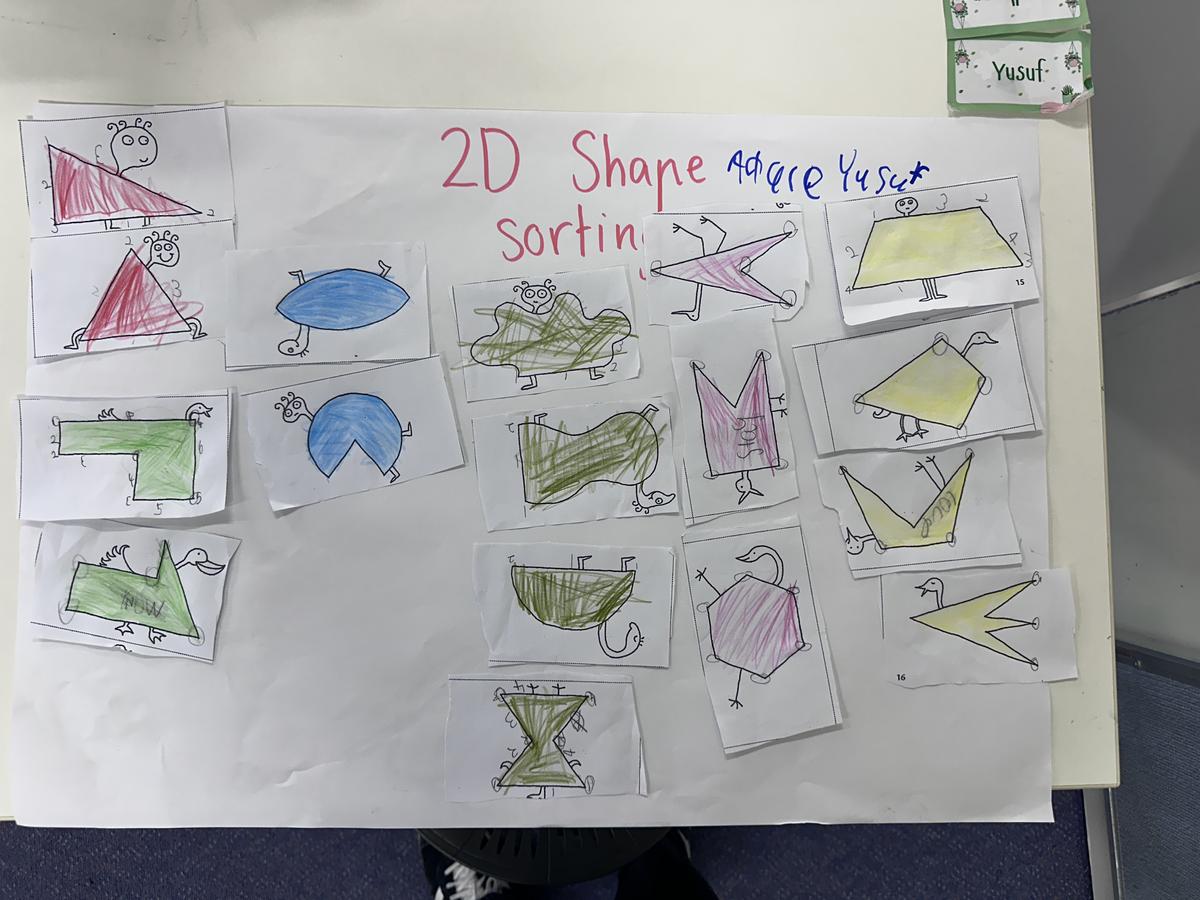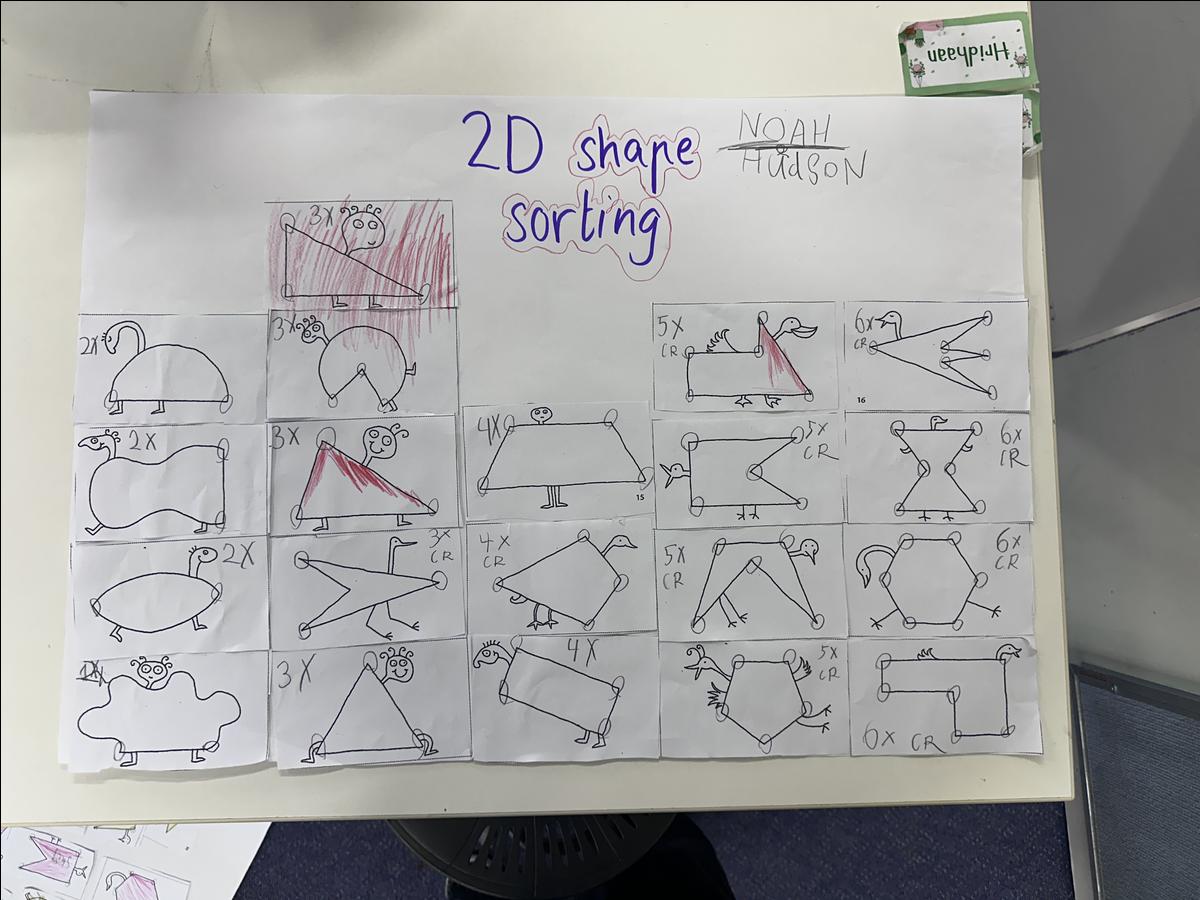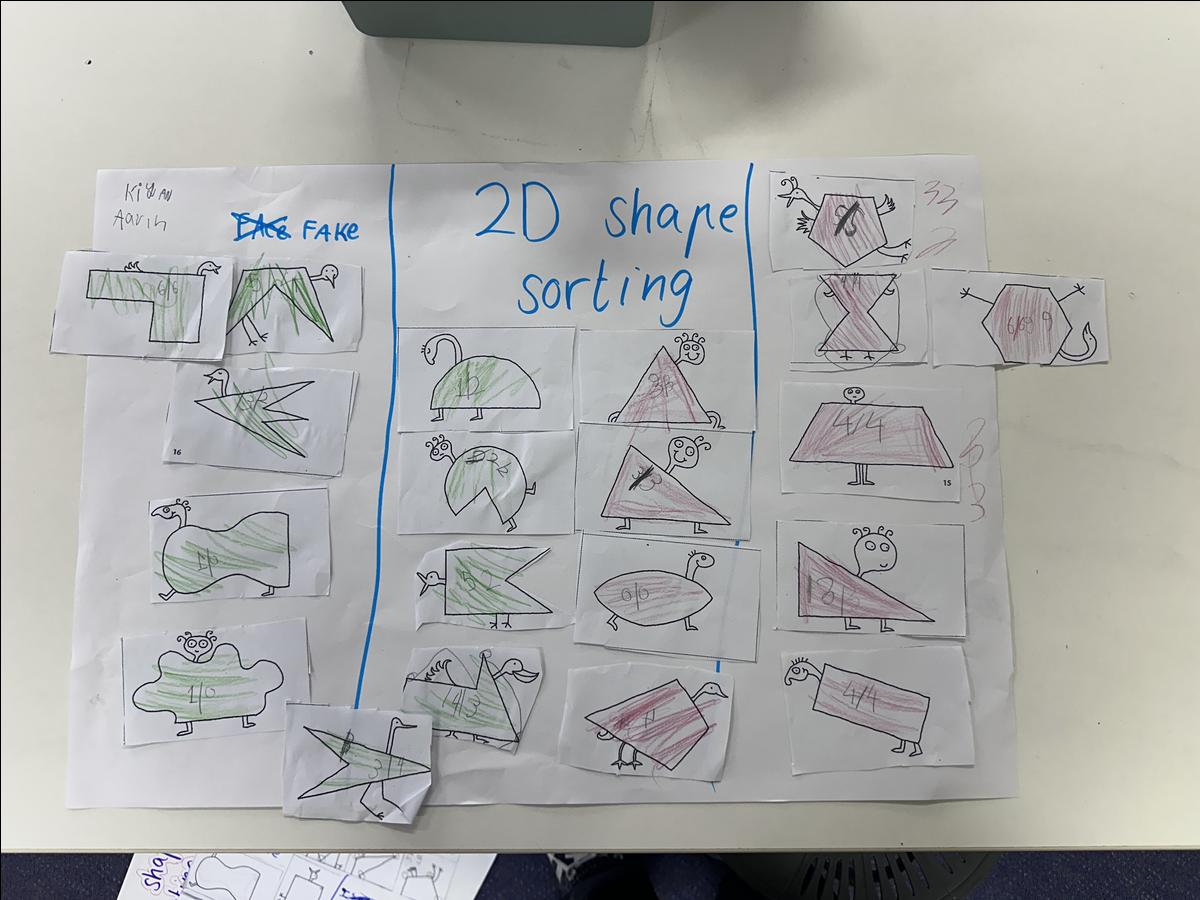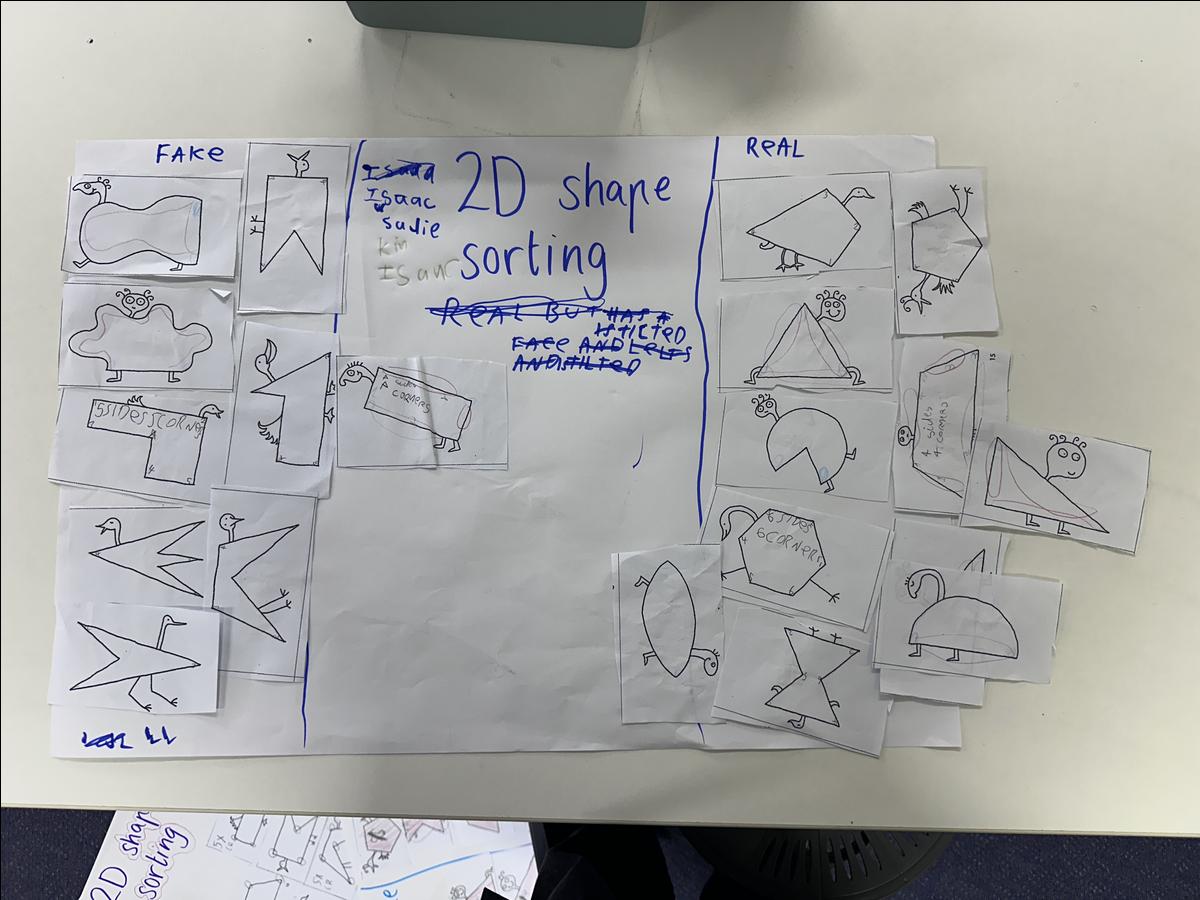Year 1 Bulletin

Learning Intention: To compare and classify 2D shapes.
Learning Experience: Over the past two weeks the grade 1 students have been investigating the properties of 2D shapes. Students started out exploring corners and sides of shapes and making them on geoboards. After that, we explained the term polygons and show the students the different classification of polygons by counting the total sides. Students also explored shapes and polygons in creating face portraits by cutting and gluing shapes, which then they tallied how many different shapes they used on a tally sheet.
Fluency: Students practiced their counting on a hundreds chart together using a hundred chart counting website. We also used this to practice applying their number sense with numbers before and after.
Whole: Using a PowerPoint, the Children were asked the question, “What shape is a beach towel?” and “Why is it like this?”
The children identified the shape and some of the answers included, “Because it fits our body.” and “It’s easy to dry ourselves.
As teachers, we modelled counting the number of sides and corners of the beach towel and asked if the children knew other things that had 4 sides and 4 corners.
Answers included, a piece of paper, a book, the TV screen…
We reviewed the properties of 2 Dimensional shapes and on an anchor chart, we counted and labelled the number of side (edges) and corners (vertices) on familiar, regular shapes.
Small:
In pairs, the children were given a set of regular and irregular shapes. They were asked to count and record the number of sides and corners on each shape.
The children were encouraged to use Mathematical language to describe each shape, including:
*straight or curved
*sides (edges), corners (vertices)
Once the number of sides and corners had been calculated, the children cut up the shape cards in readiness for sorting.
The children had to sort the shapes into matching groups, creating posters to be shared and displayed.
Whole Class Sharing:
Finally, the children shared their completed posters. They were asked to justify the distinguishing properties of each of their groups. Some of the answers included:
- We have real and not real shapes.
- We sorted based on how many corners they have.
- We sorted shapes that have straight lines and curved edges.
Prompts/Questions:
- What did you notice about using regular/irregular shapes?
- What did some shapes have in common?
- How were they the same/different?
- What helped you most?
What you can do now at home, to continue the learning from this experience
- Look for shapes and patterns around your home. i.e tiles
- Find things in your home that are 3D shapes as real life examples and ask the children to identify the shape of each face. i.e cereal boxes, tinned food, ice cream cones…
- Calculate the number of edges, faces and vertices on found items.
- Make a table/graph of the number of different 2-D and 3-D shapes found at home.
Kind regards,
Stef, Jarryd and Rosanna
The Year 1 Team
stephanie.lampard@education.vic.gov.au
rosanna.caruso@education.vic.gov.au
jarryd.lamb@education.vic.gov.au

